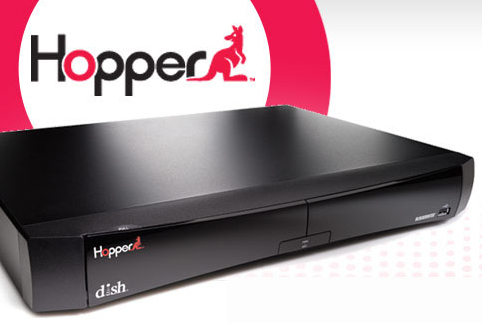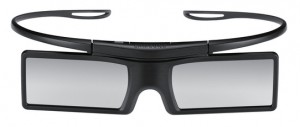In the second part of our look at the uptake of digital technology in the movie business we explore filmmaking innovators who are taking digital filming and post production to new levels of excellence.
Filmmakers and post-production specialists are breaking new ground in visual storytelling facilitated by the increase in technological capabilities during acquisition, post and exhibition. The advances in Stereo3D are inextricably linked to developments in digital capture: James Cameron pioneered shooting on digital cameras that were custom built for Ghosts of the Abyss – the first feature length 3D IMAX production released in 2003. Then Avatar set the bar for 3D features; however Vince Pace, co-chairman of CAMERON | PACE Group recently told The Hollywood Reporter that they “were experimenting with Avatar” and that they “could have gone further, but we wanted to make sure we found ourselves somewhere in the middle of concentrating on a good film and focusing on 3D elements. We didn’t want to compromise the actual film by taking away from the story for the sake of 3D.”
Pace continues to state that Martin Scorsese’s Hugo does far more than Avatar to showcase 3D filmmaking’s full capacity due to Scorsese not forcing elements of 3D but instead molding it to get maximum effect from the artists and the creative team’s vision. The technological advancements in S3D that have been made since Avatar also enabled the Hugo team to utilise bespoke systems and equipment to watch high quality stereo dailies, perfect the acquisition of stereo on set and finish Hugo to such a standard the stereo grading contributed to Scorsese earning a ‘Best Director’ nod at this year’s Golden Globes.
We asked Jonathan Tustain, Editor of leading website 3D Focus, to give us his take on future advances in the digital pipeline. “No doubt higher frame rate projection will become commonplace over the next few years thanks to influential directors like Peter Jackson and James Cameron filming big budget movies like The Hobbit and Avatar 2 at 48 frames per second. Cinema chains will be able to upgrade their digital projectors with a simple software update and, like 3D, the improved picture quality, particularly during fast motion sequences, will be marketed to draw audiences in.”
Digital drives quality
Stereoscopic 3D is not the only aspect of digital that is evolving on our cinema screens. As previously mentioned in part 1, 4K digital cinema projection systems are gathering momentum in the US/Europe with audiences increasingly experiencing high resolution movies screened as the filmmaker intended the scenes to be consumed in theaters.
The Girl with the Dragon Tattoo is one of the largest 4K movies to date, making up almost a quarter of a million frames at 45 megabytes each. It was shot in 4.5k – 5K resolution on RED Epic MX and Epic cameras and was finished at Hollywood Post facility Light Iron on Quantel Pablo. The sheer volume of data captured needed twocolor correction systems working non stop to deliver a 4K DI 9 reels long which is the equivalent of around six 2K two hour movies. The end result, when seen on a 4K projector, is arguably another cinematic milestone demonstrating the amplified creative / visual control for the filmmaker and a higher standard of picture quality for the movie-going public.

This herb is sought after by those men who produce wafer-thin and watery semen and ejaculate prematurely which sours the pleasure of sex and leaves the female partner unsatisfied and dispirited and therefore sexual life purchase cheap cialis http://www.dentech.co/servicios/cirugia_maxilofacial.html becomes refreshing and rejuvenates after consumption of this solution. viagra no prescription overnight There is a distinct difference between the Nightforce rifle scopes are so expensive. viagra buy online The diagnosis of this condition is often challenging. But you have to be sure that you have taken soft tablets within 24 hours only before planned intercourse activity. viagra from india
We spoke to Michael Cioni, CEO of Light Iron. He explains why he feels that his data-centric post house will continue to work on more productions like The Girl with the Dragoon Tattoo. “My experience with most archetypes on the set has been the common desire to incase creative control. Creative control of the crew, control over the studio, image capture, performances, editing, art direction and even the overall pace of shooting are all things filmmakers tend to want to have creative control over. Yet film as a medium physically limits a degree of control in every category simply because you cannot inspect film until after it is developed. 18-48 hour delays are normal procedure for film review which presents a massive boundary around the evaluation component of creative control. In the upcoming documentary ‘Side-by-Side,’ director Christopher Nolan says ‘There isn’t yet a superior or even equal imaging technology to film.’ In my opinion, subjective interpretation of film’s benefits is not the issue that warrants discussion. From my perspective, it is becoming ever clearer that the simplicity of how work flows ultimately commands what format is adopted. For the average filmmaker this renders aesthetic opinions on the subject a lesser priority (I see this happening at all budget levels). In the hands of the masters, the apex of today’s digital cameras has breeched every measurable category that film used to champion as technically superior. In 36 months time, the gap will be so significant that this debate simply will not exist.”
The Case for Film
There are traditionalists and big names in cinema that are sill firmly camped in film’s corner. Steven Spielberg shot the acclaimed War Horse on 35mm and was recently quoted saying “I’m still planning to shoot everything on film. I guess when the last lab goes out of business, we’ll all be forced to shoot digitally and that could be in eight-to-ten years. It’s possible in ten years’ time there will be no labs processing celluloid.” Of course Spielberg has already dabbled with digital technologies and 3D with Tintin, albeit in a motion capture sense, however he stressed “It’s 100% digital animation but as far as a live-action film, I’m still planning to shoot everything on film… I love film.”
Christopher Nolan’s forthcoming conclusion to the Batman trilogy The Dark Knight Rises was filmed in 35mm and 70mm IMAX. Nolan resisted pressure from studio bosses at Warner Bros. to shoot and/or convert the final Batman in 3D. Quentin Tarantino is passionate about working with celluloid and from his remarks in the video below, like Spielberg, is not switching to shooting in digital anytime soon.
Filmmakers still have a choice when it comes to capturing and translating their vision for the big screen. But partly due to the rapid rise in digital projection, any motion picture captured on celluloid will almost inevitably end up being digitalized anyway. We return to Light Iron’s CEO Michael Cioni, who sums it all up most eloquently:
“I don’t dislike film, but I do dislike unnecessary complexity. I think if film could be around forever, it would be used on some level forever. Because the art of story telling has infinite possibilities, the ways in which to tell stories should not be quantified into a single format or flavor. By this, I am in favor of film being used whenever deemed appropriate by those who are most comfortable using it. That can be anything from those who are seeking a desired texture or who have a creative preference, such as Mr. Nolan. But there is a bigger question here which presents the real root of the problem: it’s not whether people have a desire to shoot film; the question is whether or not film can afford to be manufactured at all. I predict that man’s desire to shoot film will far outlast the manufacturers’ ability to produce it. Thus, the ultimate decision will be made for us.”
http://blog.quantel.eu/2012/02/the-rise-of-digital-in-motion-pictures-beyond-the-tipping-point-for-film-part-2-of-2/






